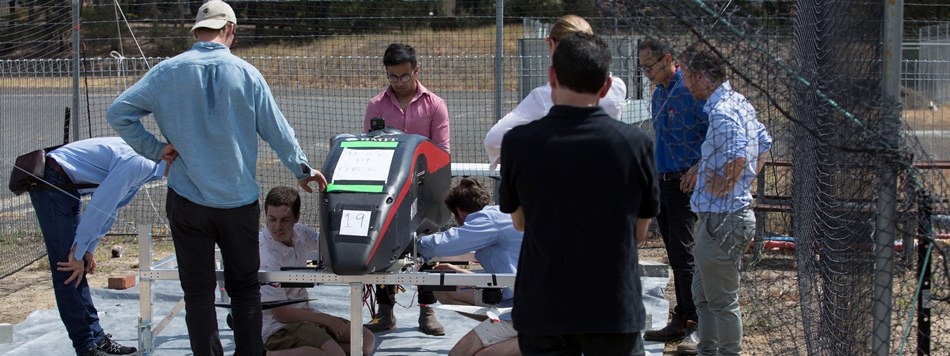Feb 27 2019
The first Australian single pilot hovercraft is being developed by aerospace engineers at RMIT University for recreational purposes.
 (Image credit: RMIT University)
(Image credit: RMIT University)
This week, the engineers will display their entry at Australia’s mega air show in Avalon, representing Australia in Boeing’s global GoFly competition that is pegged at 1 million US dollars.
According to Dr Graham Dorrington, a RMIT Senior Lecturer who is supervising the development of the prototype, by creating Australia’s largest personal electric vehicle, the group was blazing a trail.
A growing number of global ventures are vying to introduce electric-powered air vehicles capable of vertical take-off and landing so it’s vital that Australia keeps pace with the emerging technologies driving this nascent market.
Dr Graham Dorrington, Senior Lecturer, RMIT University.
RMIT students as well as new graduates of aerospace engineering, who are managing the project, are being advised by Dorrington and other senior scientists.
According to Stephen Hardiman, project lead and final year aerospace engineering student at RMIT University, the team’s commitment, expertise, and enthusiasm were the factors that were driving the project.
We’ve all been here every day and sometimes into the night, working through our summer holidays to get this off the ground. Despite all the hard work and some setbacks along the way, it’s been one of the best years of my life working on this.
Stephen Hardiman, Project Lead and Aerospace Engineering Student, RMIT University.
The new model accommodates a four-rotor drone design upgraded to a craft measuring 8’ long and which is capable of carrying a person in a canopy akin to that of an F1 racing car pod. In addition, the model is constructed from an aluminum frame with walls made of carbon fibers and foam. Wings will be incorporated in the next stage of the design.
According to Stephanie McCulloch, an aerospace engineering student at RMIT University, the craft is designed to take off in a vertical direction, which means it will not need a large space or an airstrip for take-off and landing operations, and it also includes easy controls so that formal training is not required.
The concept is a personal and affordable recreational vehicle that you can race other people in, without the need for hours of flight training or the massive amounts of money associated. It’s taking aerospace into the next generation of personal use vehicles and shows what university students, academics and industry can produce together. These competitions are great for bringing to life the next wave of ideas and innovations. I see all of this work proving useful one day and helping concepts like Uber Air become reality sooner rather than later.
Stephanie McCulloch, Aerospace Engineering Student, RMIT University.
Assisted by RMIT Activator, the researchers launched a start-up called X-Aero, with the goal to commercialize designs for futuristic personal flying vehicles.
“Start-ups are really driving tech innovation, so it’s such an exciting time to be involved - we’re learning skills we will soon require for pursuing a career in aviation,” stated McCulloch.
“Also, having something so wonderful to show for all your learning, at the end of the degree is a massive bonus.”
According to some team members, it had been their childhood dream to fly their very own personal craft—a dream that may soon become a reality.
Hovercraft News Video | RMIT University
(Video credit: RMIT University)